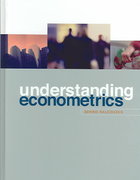Problem 1 Consider the following two-country model of the market for spinach. All producers and consumers take the price of spinach as given. Home's supply curve for spinach is given by SH=5+P Where S H is the quantity supplied by Home producers in millions of tons and P is the price in dollars per ton. Home's demand curve is given by: DH=100P Where DH is the quantity demanded in Home. Foreign's supply and demand curve are given by: SF 2 2P And DF = 100 P a. Derive the Home import demand curve and the Foreign export supply curve for spinach, and use them to nd the free-trade equilibrium, including the world price of spinach and the quantity traded. Draw a diagram that shows this equilibrium. b. Now, assume that Home imposes a $5 per ton import tariff. Show diagrammatically how this shifts the import demand curve and changes the equilibrium. Compute the new world price and domestic price for spinach in Home. 0. Does the tariff raise or lower Home's welfare? Show your calculations. Problem 3 Again, for the same model, suppose that Home does not impose any trade policy, but Foreign provides a $5 per ton export subsidy. a. Analyze the effects on the equilibrium, showing how the Foreign export supply curve is shifted and how prices, trade quantities, and welfare are affected. b. Show the terms-oftrade effect in the Foreign welfare diagram. For which country is this a benet? For which country is it a loss? Find a quota that would have equivalent effects to the $5 tariff. Show the effects, nu- merically and diagrammatically, on Home and Foreign welfare (a) under the assumption that Home traders capture the quota rents; (b) under the assumption that Foreign traders capture the quota rents. a) Home import demand curve MDH = Home demand curve (DH) - home supply curve (SH) = (IOU-P) - (5+P) = 95-2P and Foreign export supply curve XSF = Foreign supply curve (SF) - Foreign demand curve (DF) = (2P) - (100- P) = 3P100 For equilibrium under free trade, MDH = xsF or, 95-2P=3P-100 or, 5P=195 or, P = $39 is the equilibrium world price and 0* = 95-2P = 95-(2*39) = 17 tonnes is the volume of trade. We have shown home import demand curve and foreign export supply curve in a rough diagram below: Price Foreign export supply curve $47.5 $39 $33.3 Home import demand curve Quantity 17 95 b) With the imposition of import tariff of $5 per ton in home country, Price of home country becomes PH: 5+PF(where PH and PF are prices for home country and foreign country) Thus, home import demand curve becomes MD'H = 95-2PH = 95-2(PF+5) = 95-2PF-10 = 85-2PH Thus, the new equilibrium takes place at MD'H = xsF or, 85-2PF=3PF-100 or, 5PF=185 or, PF = $37 is the price for foreign country (which is also the world price) Then, PH = PF+5 = $(37+5) = $42 is the price for the home country Then, the new volume of trade = 85-2P = 95-(2*42) = 11 tonnes c) With the tariff, level of imports falls (17 tonnes to 11 tonnes) as the domestic price for spinach rises from $39 to 542. As a result, consumer surplus falls and there is a dead weight loss in the economy. Thus, total welfare falls. We have shown the effects of tariff in the home country as follows: Price Quantity Before tariff, consumer surplus = area (a+b+c+d+e+i+m+o) producer surplus = area (f) Then, Total welfare = consumer surplus + producer surplus = area (a+b+c+d+e+i+m+o+f) After tariff, consumer surplus = area (a+b+c+d} producer surplus = area (e+f) tariff revenue = area m dead weight loss = area (i+o) Then, total welfare = consumer surplus + producer surplus + tariff revenue - dead weight loss = area (a+b+c+d)+area (e+f} + area m - area (i+o) Thus, loss in total welfare clue to tariff = area (i+o)












